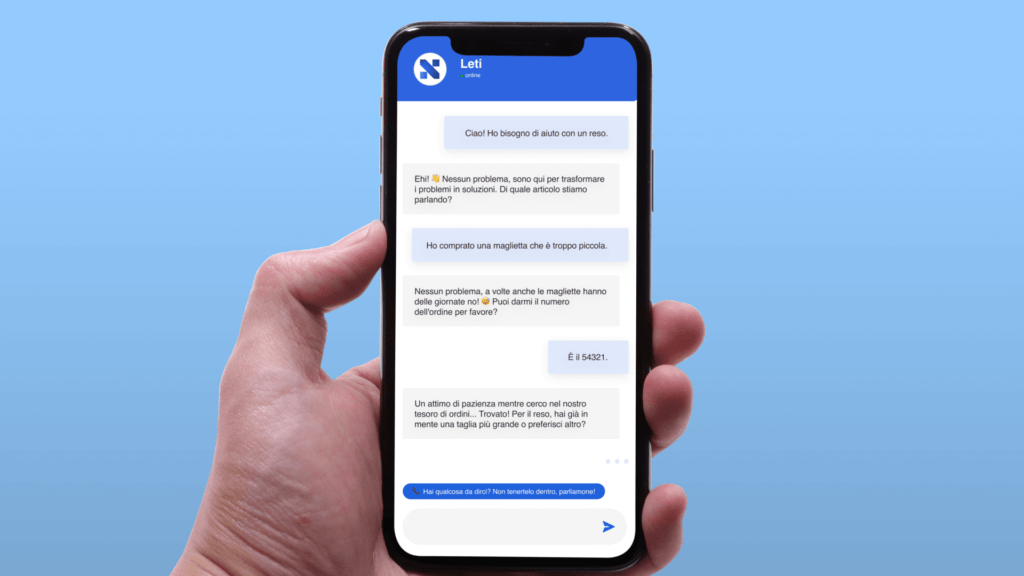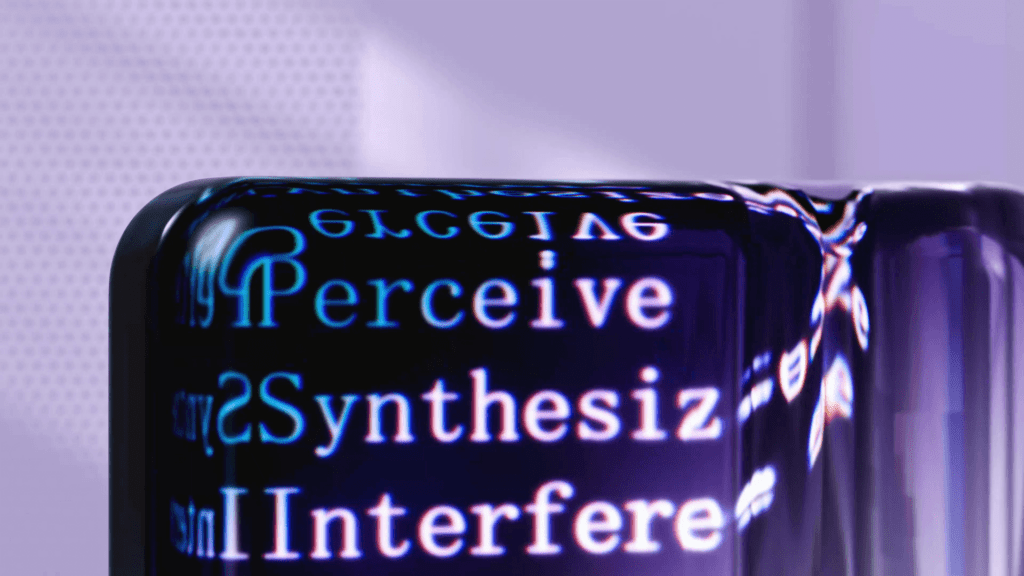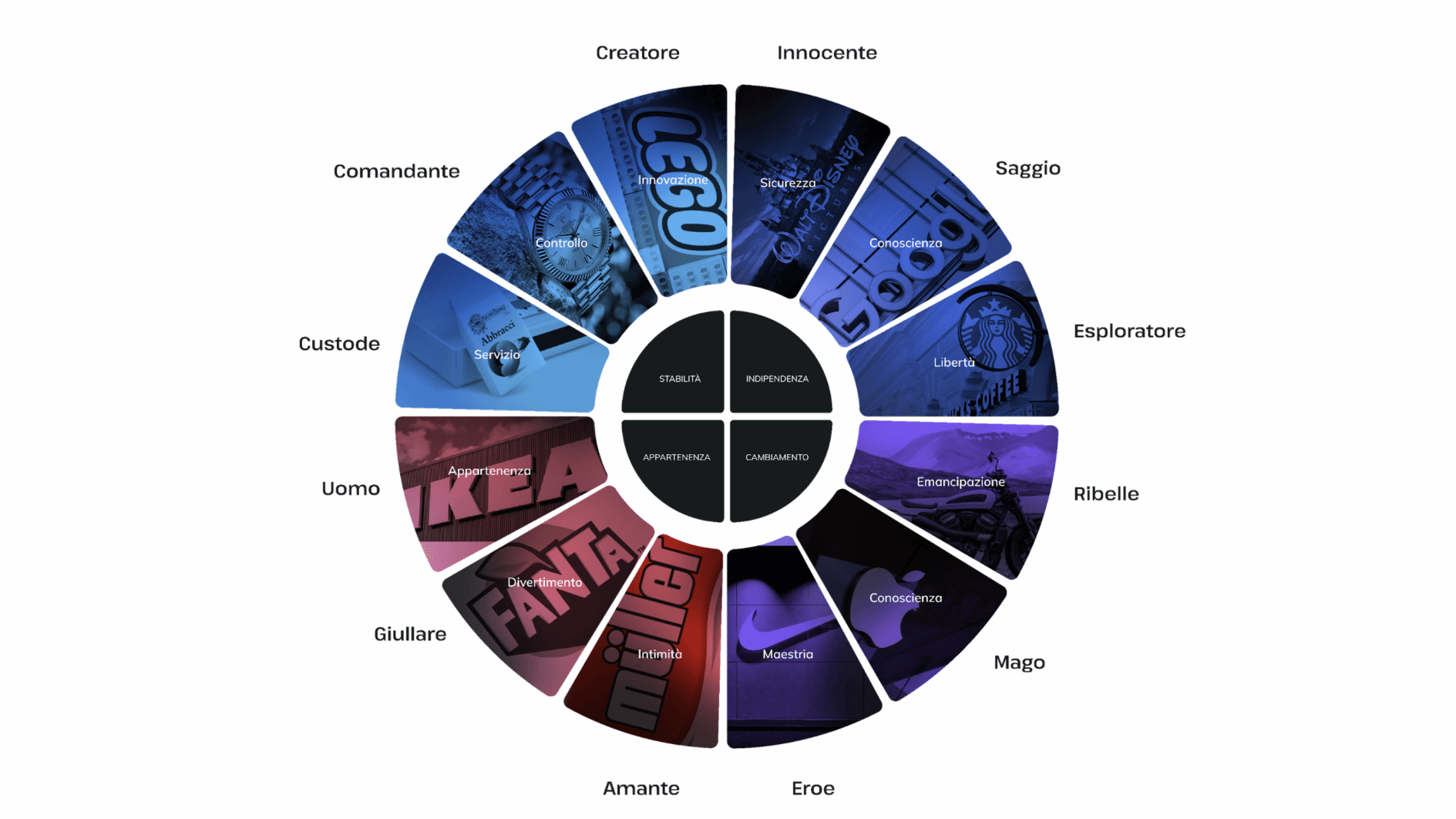Artificial intelligence is the center of innovation and creativity in countless fields, including, that of Brand Design. Many practitioners rely on AI to refine and design brand identities that resonate with global audiences, leveraging its ability to analyze large volumes of data, predict trends, and process design.
This growing reliance on AI has raised concerns about its ability to replace human labor, a theme that resonates through history whenever new technologies have begun to transform industries and professions.
At the heart of these concerns is a profound debate about the nature and value of the human touch in art and the ability to create a brand. Despite the efficiency and capabilities of artificial intelligence this remains a tool-powerful and revolutionary, but a tool nonetheless.

Recognizing these dynamics and the concerns associated with them, at Baasbox we decided to turn the existing paradigm on its head, choosing to consider AI itself as a client. As a software house, Baasbox has embarked on an innovative path in developing digital products with artificial intelligence, which find their main expression in conversational chats. This evolution led us to reflect on how users perceive our virtual assistants during interaction.
From this reflection came the idea to start applying our established brand design principles to virtual assistants in order to improve their identity and relationship with users. This approach can pave the way for all companies dealing with artificial intelligence applied to conversational chats, offering them a model for building virtual assistants that best reflect their brand identity and enhance interaction with users.
This approach is allowing us to explore new dimensions of branding, conceiving brand identities that not only communicate with humans, but also manage to be representative of the capabilities and potential of artificial intelligence. Through this process, we have begun to design with the view that AI can be both “the creator” and the recipient of the brand, a concept that opens new frontiers for innovation and creativity in brand
Artificial intelligence also has its own Brand. What does it mean?
As artificial intelligence is increasingly permeating every aspect of daily life and business, the manifestation of AI at the brand level represents fertile ground for innovation. This concept extends far beyond simply using AI as a support tool; rather, it is about incorporating AI as a living aspect of a company’s identity.
The ability of AI to manifest itself through various aspects of a brand, such as tone of voice, user interface, and even its ethos and values, offers unique opportunities for companies to stand out in the marketplace.
How a Brand can be manifested through AI.
Tone of Voice

One of the most immediate examples of this manifestation is the tone of voice adopted by chatbots and virtual assistants. These are no longer simple text- or voice-based interfaces, but representations of the brand’s personality, capable of interacting with users in a way that reflects the essence of the company. The choice of words, humor, formality or informality, and even the ability to show empathy have been finely tuned to align with the image the brand intends to project.
User interface

The user interface of AI-based systems, such as websites, applications, and chatbots, can be designed to reflect the personality of the brand. This can include the use of colors, layouts, and modes of interaction that visually and functionally communicate what the brand stands for. Artificial intelligence, then, becomes an extension of the brand’s visual identity, helping to create a cohesive and distinctive user experience.
Brand personality

In addition to outward manifestations, AI can also reflect a company’s values and ethics. For example, a company that places a strong emphasis on privacy and security can develop systems that embody these principles, not only in their functionality but also in the way they communicate and interact with users. This can send a powerful message about the brand’s commitment to these values, reinforcing customer trust and loyalty.
AI thus becomes a crucial element of manifesting a company’s identity, parallel to traditional components such as the logo, brand color, and typography. It is no longer just a tool to streamline operations or improve the customer experience, but an integral part of brand identity, capable of communicating, interacting, and even expressing corporate values in a unique way. This paradigm shift requires a holistic approach to brand design, where AI is seen not just as a technology to be used, but as a true stakeholder to be understood, designed, and ultimately fully integrated into corporate identity.
Archetypal Branding

Always at Baasbox, we have shaped brand identity through the methodology of archetypal branding, an approach rooted in Carl Jung’s theories of archetypes. Jung introduced the concept of archetypes as universal patterns of behavior, deeply rooted in the collective human experience, which serve to connect the conscious with the unconscious through universal symbols, part of what he called the “collective unconscious.” Carol S. Pearson and Margaret Mark have taken this view further, noting how many successful brands have built their image around these universal archetypes. In their book “The Hero and the Outlaw,” they outline a methodology that identifies 12 archetypes, each linked to specific basic human needs.
By incorporating this understanding of archetypes into brand creation, we have discovered unexplored and promising territory: the application of this same methodology to the design of virtual assistants with artificial intelligence. By recognizing that each archetype speaks to specific needs and aspirations, it is possible to design virtual assistants that embody these same qualities, enabling a deeper and more meaningful connection with users.
For example, let us imagine adopting the Wise Man archetype in the design of virtual assistants. These assistants would not simply answer questions but would offer advice, insights and solutions based on deep understanding and wisdom. Their communication would be characterized by a tone of voice that conveys clarity, reliability, and authority, designed to guide users toward well-informed choices. In parallel, the choice of colors and interface design would reflect these same values, opting for elements that evoke feelings of serenity, knowledge, and trust, making the virtual assistant a visual and interactive extension of the chosen archetype.
Through the application of archetypal branding in the design of virtual assistants, we not only elevate the user experience but also emphasize the consistency and uniqueness of the brand represented. This approach enriches the functional dimension of the virtual assistant and turns it into a true brand ambassador, capable of interacting with the user in a way that faithfully reflects the brand’s personality and values.
Giving artificial intelligence a corporate identity means enriching the user experience by providing a more personal and meaningful interaction. This process demonstrates that even as technology advances, the core of our interaction remains deeply human. We are the storytellers, artists and creators who bring artificial intelligence to life, endowing it with a character and personality that can truly resonate with users on a personal level.
As we move forward in this era of innovation, it is essential to remember that our ability to infuse creativity, empathy, and emotional intelligence into artificial intelligence not only enriches its capabilities, but sets a new standard for what it means to interact with technology.
At Baasbox, we are committed to leading this transformation, ensuring that we give an identity to the products we develop and continuing to celebrate and value the unique contribution that only humans can make.
Want to find out more about our Virtual Assistants?
Aurelia Vittoria Branconi, Head of Visual Design at Baasbox, applies the philosophy of shapes and colors to every aspect of life. From a brand mark to a beautiful coat.
Back to magazine


